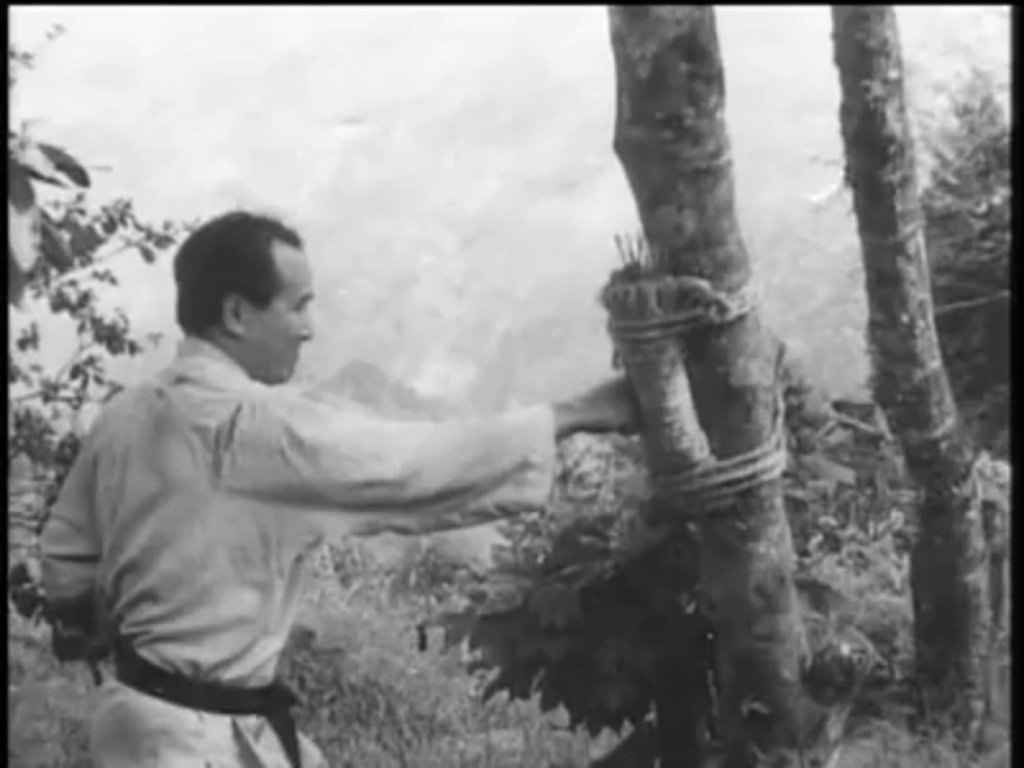For karate lovers, as in other disciplines, training is the only way to improve. Given this, practicing punches, kicks and strategic movements in art is better facilitated with a makiwara.

For those who do not know what it is, in general terms it is an aid tool for karate training. It is a solid, robust and very resistant piece, special to improve our technique. In the next post we will talk about its origins and types, making special reference in a very interesting one.
ORIGIN OF THE MAKIWARA
Within the world of martial arts, makiwara is a well-known tool. It is primitive but traditional in karate training.
It was born after the search for alternatives of the great masters in martial arts that will help develop skills among students. Many believe that, like most equipment, it comes from China. However, its origin is Japanese specifically from Okinawa (Japan)
[adsense]
Historians believe they used it in Japanese fencing practices in Jigen Ryu style. This technique was developed by the samurai Satsu clan and was based on strengthening and improving the precision of the stab made of wood. These crashed in a pole located vertically and a good friction and resistance were sought.
HOW IS A MAKIWARA FORMED?
The structure of a Makiwara is very simple and easy to understand. Imagine a rectangular table or with varied dimensions. Its front should be protected with a very resistant pad.
Some models come with this area covered in thick leather or rubber fillings. This wide variation of textures is due to the type of discipline that is performed. Also, starting from the thickness of the wood we can detect the type of martial art.
[adsense]
With this system the practitioner repeatedly hits the padded area, generating strengthening in his arms, knuckles and wrists. It is a routine that is created to use it correctly.
TYPES OF MAKIWARA
The Makiwara is a very useful and mandatory karate training tool to better develop our skills. From homemade to specialized models, this instrument is common to see in karate dojos or martial arts centers.
There are different types of makiwara. The makiwara can be flat or cylindrical. Some vary their weight and consistency depending on the activity that is practiced. But at the conceptual level there are two models:
- Soft: special to strengthen knuckles and reduce the sensation of hit on each impact. They offer no resistance and do not generate any type of injury.
- Rigid: this one offers a lot of resistance in every hit. It is more specialized for perfect strokes made with great precision.
It is important to buy or manufacture one according to our level and type of martial art. Expert supervision is essential to avoid mistakes and make the most of the instrument.
TRAIN WITH MAKIWARA
To understand the training modality of makiwara well, you have to understand this question perfectly, what is the purpose of makiwara in karate training? Well, at first glance it seems to be a simple object to hit at a specific point.
[adsense]
One of the main training objectives of makiwara is its mechanism as it seeks the effectiveness of the hit through body coordination. This body coordination consists in directing a hit (when I speak about a hit I also refer to the force or energy that the body expels with the extremities) towards a specific point. In other words, learn to coordinate the force expelled towards a specific objective.
This specific objective is the makiwara hit zone. This is a training method to prepare karate practitioners to direct and make accurate fists or kicks to the enemy.
Generally the training with the makiwara is done in a static way (these in its elementary version) although there are also more complex workouts with the makiwara than in which the karate practitioner has to be in constant motion.
[adsense]
In training with the makiwara it is absolutely necessary to combine it with strengthening and elasticity exercises of the body. The pace of training and repetitions must be strictly measured otherwise if you train excessively with the makiwara it can be harmful to the structures of the wrist bones and knuckles. So the training with the makiwara has to start with few repetitions and low intensity and gradually increase the repetitions and intensity. To train in an excellent way we recommend the makiwara karate wall with an excellent padded surface.
HOME MANUFACTURE OF A MAKIWARA
There are professional Makiwaras although we can also make our own makiwara. Next, we will mention the most popular home models:
- A good wooden board whose height is equal to ours. That is resistant and very well sealed to prevent breakage in the first hit. At the top we put a rubber pad filled with rubber to our liking.
- Take a good amount of rope “mecate” type and wind it well on a cylindrical surface, very thick.
- Place a pad on the wall very well attached or recessed. This one with the features that suits us.
- We take an empty rubber or tire and in the middle we place a well tied board. For this we need a climbing rope, resistant and we drill the wood and rubber. The result should be an embroidery that adheres and immobilizes the piece as if it were a single piece.
[adsense]
These are some samples of the different types of Makiwara that we can make at home. However, if we want one already made and of good relation quality-price, we have the following offer Makiwara Karate Wall.
In Soloartesmarciales.com you will find an excellent piece made for professionals and at an incredible price. It is a Makiwara Karate Wall with a holzkonstruktion dock. Its surface is padded and comes with a faux fur lining. It’s perfect to improve our temper and precision.
👉🏼👉🏼 Share this 💚💚🙏🏻🙏🏻:
